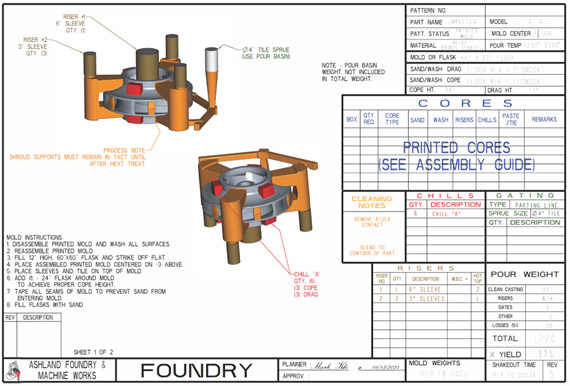Before we mold or pour, many of our more complex geometries, we simulate the casting process and analyze the resulting casting soundness. Through casting simulation, our Engineers optimize our gating system to reduce turbulence as molten metal enters the mold cavity. They locate the appropriate number of risers to ensure our casting is well fed during throughout the solidification process. Riser size is adjusted to ensure adequate feed metal remains liquid until the casting has solidified completely.
Our Engineers utilize their resulting casting design to either build conventional tooling or to support our rapid prototyping with printed molds.
We are a foundry team who utilizes casting simulation in our development of your cast components.
We set up our molding, melting and pouring practices to intentionally design out cast defects such as shrinkage and porosity.
Below is an example of our process sheet created by our Foundry Engineers to convey our casting design to the shop floor.

We detail every step of the process to ensure that you enjoy consistent quality and a high level of dimensional repeatability.
All of this preparation happens before we make our first mold and pour castings, that is a benefit of casting simulation with Ashland Foundry.
- Quality designed into the process
- Consistent results
- Reliable delivery
Let us put our Foundry Engineers to work for you to ensure your first articles are delivered on time and per specification.
By the way, our Foundry Engineers utilize Creo (aka Pro Engineer, Cad modeling) for modeling of castings, gating and risering.
Neutral file formats such as STP (step) are preferred for customer supplied CAD models.
